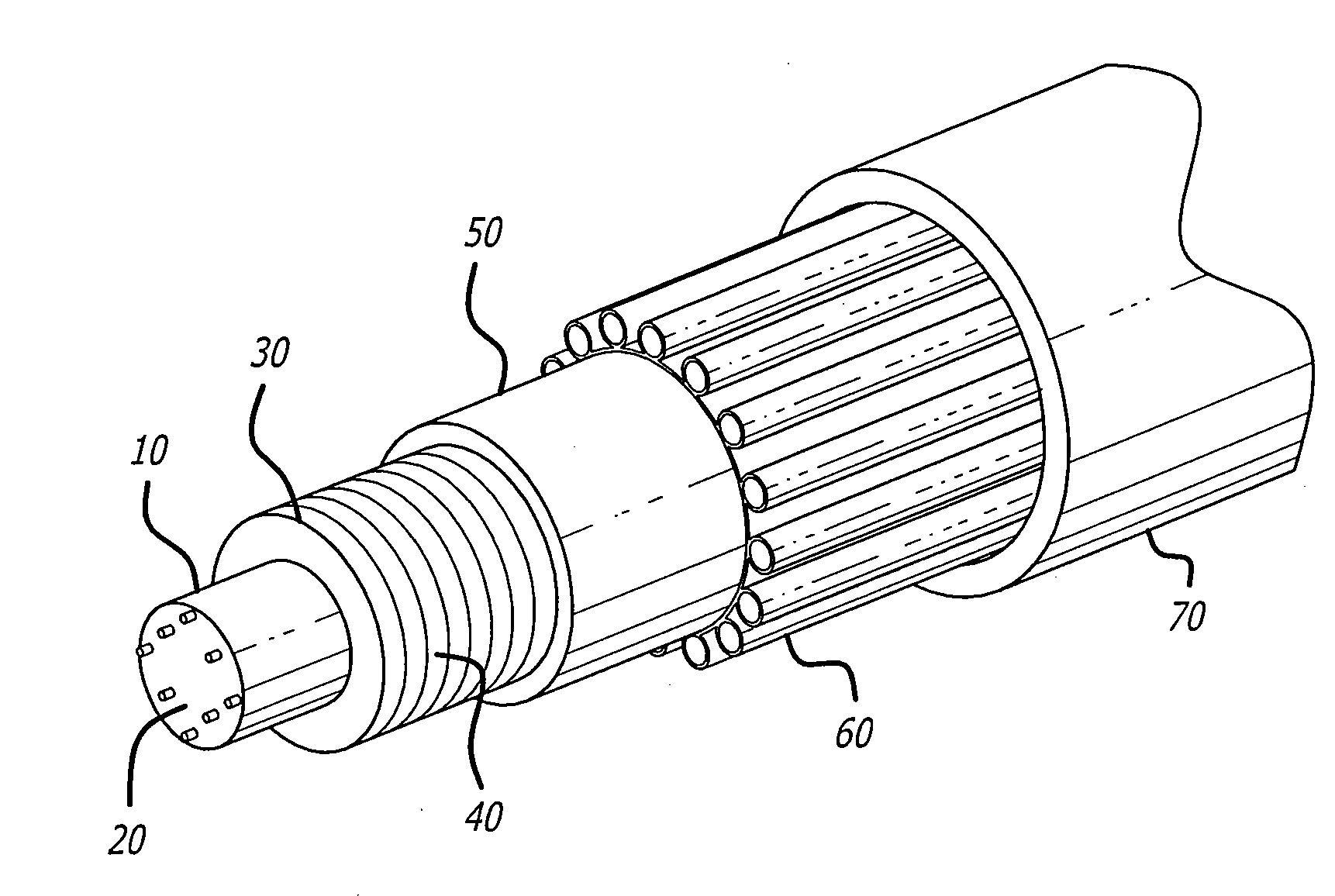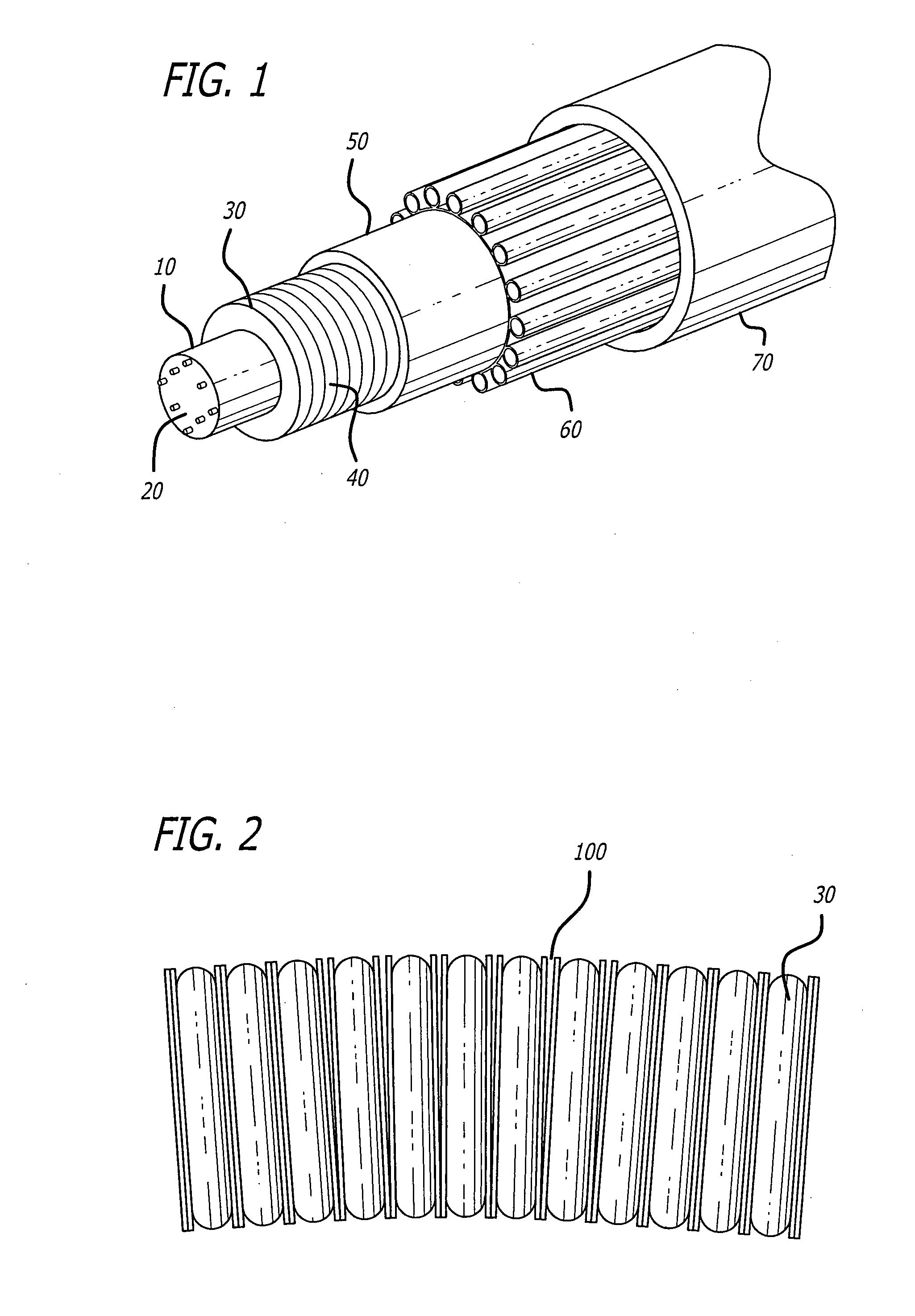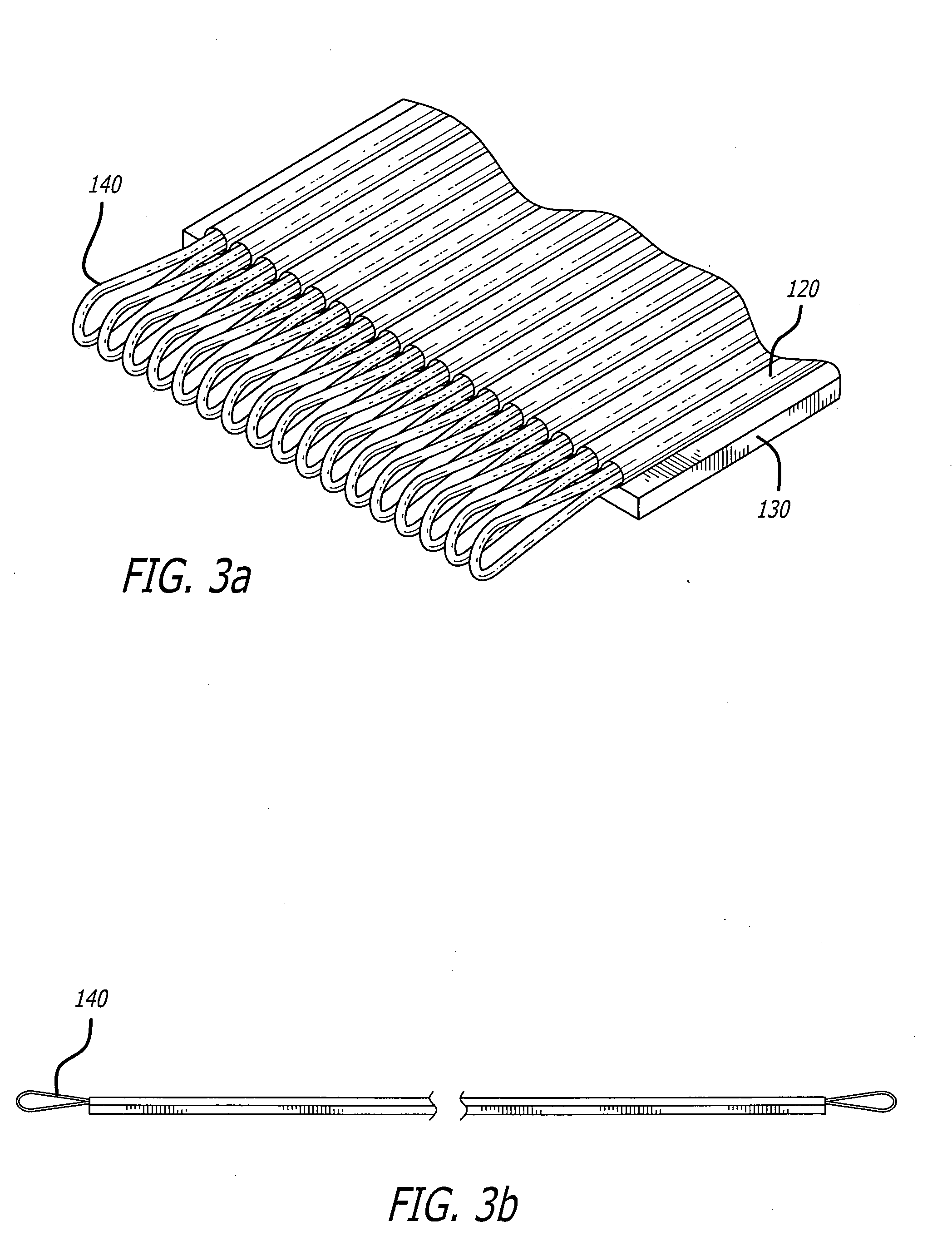Rugged fiber optic towed array
a technology of towed arrays and fiber optics, applied in the direction of optical elements, instruments, using wave/particle radiation means, etc., can solve the problems of high production costs, poor reliability during handling operations, and high manufacturing equipment requirements for rigid mandrels and flexible links, etc., to achieve excellent acoustic properties and sensitivity, the effect of being easy to break
- Summary
- Abstract
- Description
- Claims
- Application Information
AI Technical Summary
Benefits of technology
Problems solved by technology
Method used
Image
Examples
Embodiment Construction
[0019]While several particular forms of the invention have been illustrated and described, it will be apparent that various modifications can be made without departing from the spirit and scope of the invention. In a preferred embodiment, as depicted in the exemplary drawing of FIG. 1, the construction includes a central flexible core 10, within which pass-through fibers 20. Through fibers are defined as fibers that are not used for sensing in a given acoustic module, and are either helically wound within the flexible core or passed through the center of the flexible core. Fiber Bragg Grating (FBG) arrays (not shown) can also be helically wound within the core for measuring the shape of the array. The core is constructed with the fiber wound around a core layer of voided plastic, such as polyurethane or other appropriate polymers, then overcoated with the same material for protection. Use of the voided plastic helps to ensure neutral buoyancy of the array, while avoiding the use of ...
PUM
 Login to View More
Login to View More Abstract
Description
Claims
Application Information
 Login to View More
Login to View More - R&D
- Intellectual Property
- Life Sciences
- Materials
- Tech Scout
- Unparalleled Data Quality
- Higher Quality Content
- 60% Fewer Hallucinations
Browse by: Latest US Patents, China's latest patents, Technical Efficacy Thesaurus, Application Domain, Technology Topic, Popular Technical Reports.
© 2025 PatSnap. All rights reserved.Legal|Privacy policy|Modern Slavery Act Transparency Statement|Sitemap|About US| Contact US: help@patsnap.com



